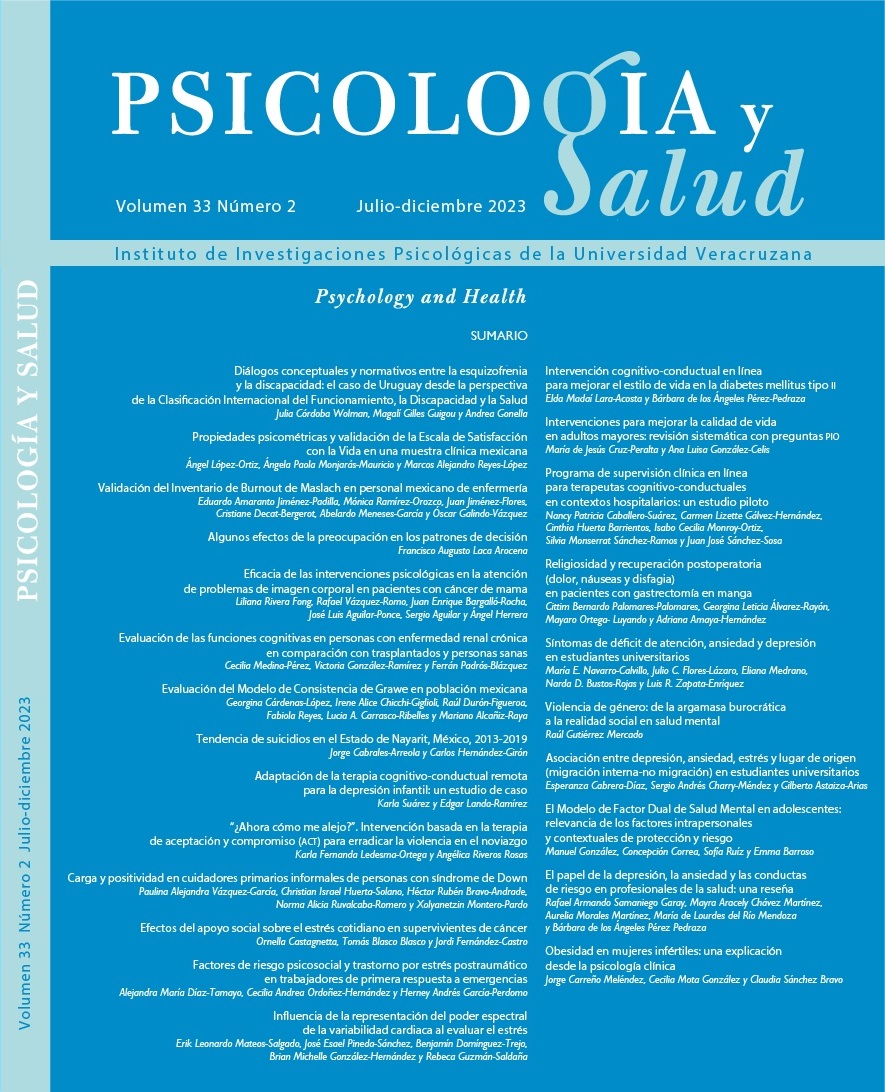Abstract
Currently, suicide is a public health problem in all states of Mexico; its occurrence and the worldwide dynamic increase keep occurring year after year. In first-world countries and developing ones, mental health disorders are the main trigger for suicidal behavior, leaving in it is wake devastating psychological consequences for the families of the patient who performs the suicidal act. A notable increase of almost double the number of completed suicides occurred in Nayarit between 2013 and 2018. These data stemmed from the mental health department of the Health Secretariat at Nayarit and the offices of the forensic medical services of the state attorney general. The present study used a descriptive, time-series design, employing suicide deaths in Mexico over six years, reflecting the epidemiological increase in suicide deaths. It is necessary to urgently apply the existing strategies recommended by the World Health Organization and Mexican health institutions for the prevention of suicide, as well as to implement strategies to detect suicidal behaviors on time and generate better psychological and psychiatric support for patients with already detected mental disorders. All of the above leads us to reflect on the various predisposing factors that could have caused this increase in suicides in Nayarit, Mexico.
References
Chaparro N., P., Díaz J., D. y Castañeda O., C. (2019). Tendencia de la mortalidad por suicidio en las áreas urbanas y rurales de Colombia, 1979-2014. Biomédica, 39(2), 339-353.http://dx.Doi.org/10.7705/biomedica.v39i3.4427.
Corona, B., Hernández, M. y García, R. (2016). Mortalidad por suicidio, factores de riesgo y protectores. Revista Habanera de Ciencias Médicas, 15(1), 90-100.
Gerstner, R. y Lara L., F. (2019). Trend analysis of suicide among children, adolescent and young adults in Ecuador between 1990 and 2017. Anales del Sistema Sanitario de Navarra, 42(1), 9-18. Doi: 10.23938/ASSN.0394.
Hernández B., H. y Flores A., R. (2011). El suicidio en México. Papeles de Población, 17(68), 69-101.
Jiménez O., R. y Cardiel T., L. (2013). El suicidio y su tendencia social en México: 1990-2011. Papeles de Población, 19(77), 205-229.
Juárez O., H., Barranco G., M., Flores P., J., Flores P., C. y Acosta B., M. (2006). Intentos suicidas con uso de medicamentos. Informe de dos casos y revisión de la literatura. Acta Pediátrica de México, 27(2), 55-59.
Kopp, C. y Mcintosh, J. (1997). High risk environment and young child children. En J. Noshpitz, S. Greens, Wieder, J. y Osofsky, J. (Eds.): Handbook of Child and Adolescent Psychiatry (v. 1, pp. 160-176). John Wiley & Sons.
Organización Mundial de la Salud (1996). CIE 10. Trastornos mentales y del comportamiento. Versión multiaxial para adultos. OMS.
Organización Mundial de la Salud (2000). Prevención del suicidio un instrumento para médicos generalistas. Trastornos mentales y cerebrales, departamento de salud mental y toxicomanías. Recuperado de https://www.who.int/mental_health/media/general_physicians_spanish.pdf?ua=1.
Rodrigues, C., De Souza, D., Rodrigues, H. y Konstantyner, T. (2019). Trends in suicide rates in Brazil from 1997 to 2015. Brazilian Journal of Psychiatry, 41(5), 380-388. Doi: 10.1590/1516-4446-2018-0230.
Sanz R., L., Gómez G.P., M., Almendro M., M., Rodríguez C., C., Izquierdo N., A. y Sánchez H., P. (2009). Estructura familiar, acontecimientos vitales estresantes y psicopatología en el adolescente. Revista de la Asociación Española de Neuropsiquiatría, 29(104), 501-521.
Shaffer, D. (1974). Suicide in childhood and early adolescence. Journal of Child Psychology and Psychiatry, 15(4), 275-291.
Sistema Nacional de Información en Salud (SINAIS) (2019). Bases de datos. Recuperado de http://www.sinais.salud.gob.mx.
Stata Corporation (2012). Stata Reference Manual: Stata reléase 12.0. College Station, TX: Autor.

